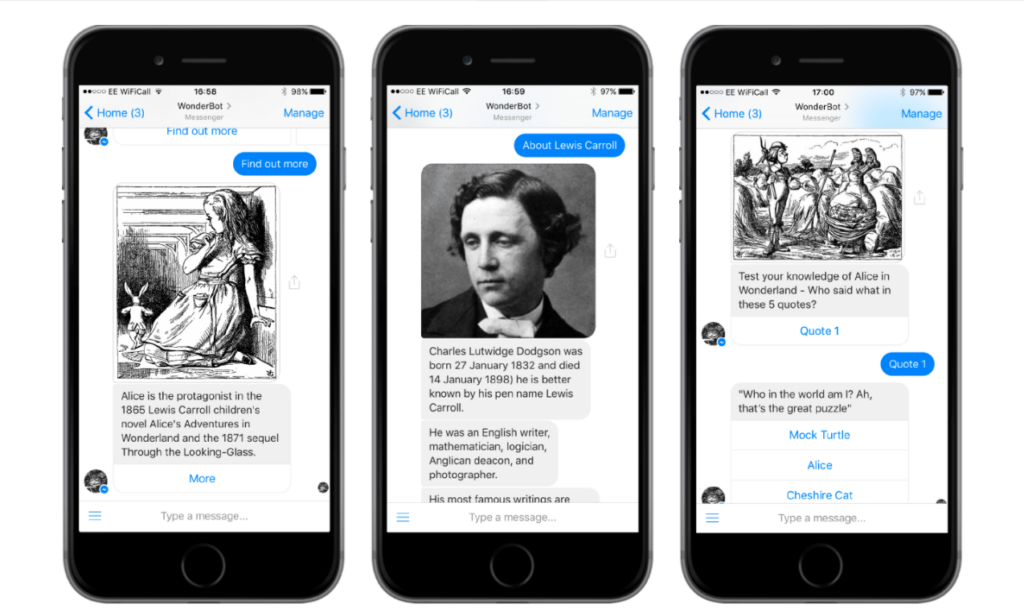4 Ways Book Publishers Can Take Advantage Of AI

For years, the stock exchanges, manufacturing, shipping, and airline industries were the talk of the town when it came to spearheading artificial intelligence (AI) systems integration.
Now, the conversation surrounding AI has seemingly shifted to nearly every space, with tools like ChatGPT becoming a valuable resource for many.

And yet for all the hullabaloo you hear about AI being on track to revolutionize the consumption economy and transform publishing, there sure seems to be a lack of detail about how, exactly, it will do so.
The trick to AI is approaching it with one very important factor in mind: you.
What problem do you need to solve? Since AI is built specifically to adapt, the possibilities can seem at once endless, so it’s difficult to know where to begin.
With an industry as established, venerated, and culturally significant as publishing, there’s an understandable fear of gumming up the works, not to mention concerns surrounding AI replacing writers altogether.
But using AI within the publishing industry doesn’t mean doing the job of writers – it should simply be applied as a creative tool.
It turns out that integrating AI into the everyday decision-making of publishers is less daunting than it may have seemed.
Here are 4 ways real companies can take advantage of AI in publishing:
1. To Increase Discoverability
Discoverability – how easy it is for a consumer to find a specific product or find what the right product is – is one of the most common concerns of publishers today and understandably so.
If your audience can’t find your book, how will it ever get read and shared on the New York Times Bestseller and be picked as one of Oprah’s favorite things??
Only in the past few decades have specific factors shown themselves to be key performance indicators to a book’s discoverability:
- Thorough ONIX Metadata completion
- Title (both in substance and formatting)
- BISAC Categorization
- Long Tail Keywords
- Reviews
- Ratings
- Social Chatter
- Comparative Titles
- Historic Customer Behavior Data
- Digital merchandising (how the cover comes across in an ebook store setting)
So, now you just go and optimize each of these metrics–measure, analyze, implement, test and then re-calibrate when sales data is available– for each of your backlist and front list titles.
Easy Peasy. Except…it’s a lot of data….and takes a lot of time to go through and do it justice.
Most publishing companies don’t have the resources to open a full data science department with staff to crunch those numbers and compare them with industry norms, editorial trends, and company brand.
But AI can do it in minutes.
In 2016, the Associated Press implemented natural language processing (NLP) AI to aid its journalists in the newsroom, beginning with earnings reports. In their associated white paper, AP Manager of Corporate Strategy Francesco Marconi offered a great context for implementing AI:
“Artificial intelligence understands the environment it operates in and performs certain actions as a result of it. AI seeks to learn what its users want and how they want it…. AI can help journalists do more investigative work by analyzing massive sets of data and pointing to relationships not easily visible to even the most experienced reporter.”
We’ll dive into more of their findings later on, but here’s the major point:
AI can ingest, and analyze massive amounts of data using specific parameters and produce exacting results with direct applications.
Precise keywords: Reach a bigger audience on Amazon
It can analyze the text of a book and find the major themes, characters, and settings to use as keywords, which has pretty much been the norm for those doing it by hand.
It also compares the text to reader reviews, emotional response statistics, social chatter, consumer behavior studies, and more to produce keywords and other metadata using language that the ideal reader for this book uses to talk about themselves and the things they like and dislike.
As a result, you are freed up to continue being awesome, armed with not just great keywords, but inherent insight into how your reader is going to discover your book and how it’s going to make them feel.
Another important application of AI is BISAC categorization. Those pesky codes that you haven’t looked at in years could be costing you thousands of dollars in missed discoverability. Machine learning and natural language processing can assist you in quickly choosing new and more accurate BISAC codes.
2. To Increase Efficiency and Quality of Output
AI promises to help publishers maximize their output and create a higher level of consistent quality of that production. Specifically, AI can:
- Save time for data entry with consistent and reliable data
- Speeds up decision making by supplying relevant information and analysis
- Ease scaling challenges with its ability to ingest backlist content
- Enhance comps to go beyond subjective opinions/in house awareness
Today’s market moves faster than before, has more options than before, and more pitfalls than before.
As a result, you don’t just have to be the smartest and the most creative in the room, but the most efficient and accurate, too. To accomplish all of that is no easy task.
By applying artificial intelligence and machine learning programs to certain areas of your business–categorization, data entry, audience targeting, product positioning, statistical analysis, etc.–publishers and other industries stand to move faster and generate more lucrative products.
Hit the Ground Running
The sheer quantity of titles and details that editors and marketers are responsible for is astounding.
It’s not surprising that some titles don’t get the same attention as others do. Consider the discussion of metadata in section one: what if instead of beginning the marketing plans with a blank page and notes from the editor, you began with a customized set of metadata keywords and comps?
Suddenly you go from an against-the-odds rag tag group to a brain trust with an extensive analysis of not just this book, but the whole publishing landscape for comparison and battle-planning.
Enhance Gut Instinct With Objectivity
We all work as hard as we can to read the newest releases as well as the classics…but it’s impossible to know every detail of every book and every market.
As a result, most comps are either limited to one’s own backlist titles or to what that person or team is aware of.
One of the features of AI is its ability to ingest and analyze huge amounts of data (like the entire New York Times bestseller list since 1973) to produce an accurate comparison based on whatever data point you tell it to measure for in minutes.
You know the voice of this book is something special, so you can find comps based on that. Or the setting, or the readability index.
You’re in the driver seat – AI is just like your GPS.
With artificial intelligence, teams can start off with metadata and insights specific to each title and use their expertise to edit and collaborate. After all, it’s harder to start with a blank page than it is to edit a full one.
This all sounds well and good, but would it actually work for a creative field? It did for the Associated Press.
Since implementing AI algorithms to produce automated earnings reports in 2014, the Associated Press estimates that at up to 20 percent of journalists’ time was freed up as a direct result.
Through automation, AP is providing customers with 12x the corporate earnings stories as before (to over 3,700), for a lot of very small companies that never received much attention.
The AP saw their journalists produce not just more earnings reports, but more work and work of a higher quality across the board thanks to their new-found free time.
They saw an increase in their writers engaging with user generated content, multimedia report output, and actually “pursuing investigative work and focusing on more complex stories.”
The AP actually used Natural Language Processing, just one facet of their applied AI, to condense the entire report for the Executive Summary. There, they praise AI’s ability to fast track the necessary but time-consuming demands of journalism.
3. To Optimize Each Book’s Marketing and Sales
So we’ve talked about the tedium that AI can potentially help you avoid, but what about the exciting, edge of your seat, game-changing creativity it seems to promise?
One of the biggest impacts will be to the bottom line: the more time you save on decision-making and data entry throughout the life of a book, the more resources are available to you in those critical stages before a book goes to market.
In the same way that AI services can A/B test website landing pages and run audience tests based on demographics, AI can ingest data to predict behavior and put you one step ahead.
More Marketing Spent Per Book
Marketers’ resources are split and their time stretched thin, dominated by efforts for frontlist titles that publishers paid huge advances to. The publisher needs to make their investment back. It also means that money is left on the table for books that could be huge successes with an extra push.
In addition to the extra time AI can free up, the contextual data that AI tools provide marketers and sales could show opportunities for cross promotion, ideal publication timing, etc.
Evaluating successful book adaptations could also provide a road map for positioning a book to be optioned by a movie studio more quickly, or for finding the right studio to approach first.
4. To Increase User Engagement
With all of the information at your fingertips, publishers have an opportunity to meaningfully capture direct – to – consumer sales in a way that hasn’t been as achievable before.
Today’s readers and shoppers have so many options constantly available to them, so having a genuine product to sell them and knowing how to sell to them, in particular– stands out.
“These revolutionary technologies are boosting the capability of publications to create and deliver more personalized experiences to and for consumers in increasingly fragmented markets,” notes MediaRadar. “AI can help deliver relevant content to niche markets and individual users with ultimate precision.”
With AI’s demonstrated ability to generate keywords to increase a book’s discoverability, publishers have a view into the kinds of things their readers are interested in engaging in, and can use that to target ads.
By running comps on some of those facets, they can expand or narrow that audience even further, or bundle and offer recommendations that will nurture that relationship with the consumer.
Chatbots: For More Than Just Support
Some publishers are already testing the wheels out on this particular application in the form of chatbots, which have seriously grown up since the days of AIM SmarterChild.
Built to imitate voice, tone, and trained on typical conversation patterns and predicted outcomes, publishers use chatbots to drive user engagement and deliver an intimate experience to their readership.

Book publishers HarperCollins and Pan Macmillan are the most notable to start testing the chatbot waters thus far.
Both houses implement bots via Facebook messenger, with Pan Macmillan outsourcing its development to Bam Mobile’s Authorbot, which “offers a way to quickly and easily create an author chatbot that readers can interact with..[and] find out about plot, characters, backstory and access exclusive content through messaging” without adding to author time, commitment, or cost. Authorbot is also available on Slack, Amazon Echo, Google Now, and Telegram.
Tech magazine VentureBeat keenly identified the four major elements that any AI worth its salt needs to guarantee increased user engagement when building their own personalized news delivery bot on Google Home (specifically):
- Serendipity – Based on user preferences and past behaviors, bots can recommend stories that are likely to be of interest to readers before they begin looking for that content.
- Unlearning – Just as the bot can predict potential future interests, it can also detect and eliminate past areas of interest and not send certain topics based on lack of interest.
- Recency – Chatbots allow readers to stay in the know and keep up with latest stories within their topics of interest.
- Learning – Perhaps the most powerful function of chatbots is the ability to learn based on both implicit and explicit input and behaviors of users — the stories they read, the amount of time spent with each story, and the sum of all of their interactions including likes and shares.
After all, most technology we develop is for a singular reason: we want to make life better, easier, more enjoyable, more accurate–more something.
It’s just human nature to want to do better and expand our experience for the short time we have.
It might sound over blown, but because of that very instinct, publishers have some really exciting possibilities for improvement and expansions with AI.
